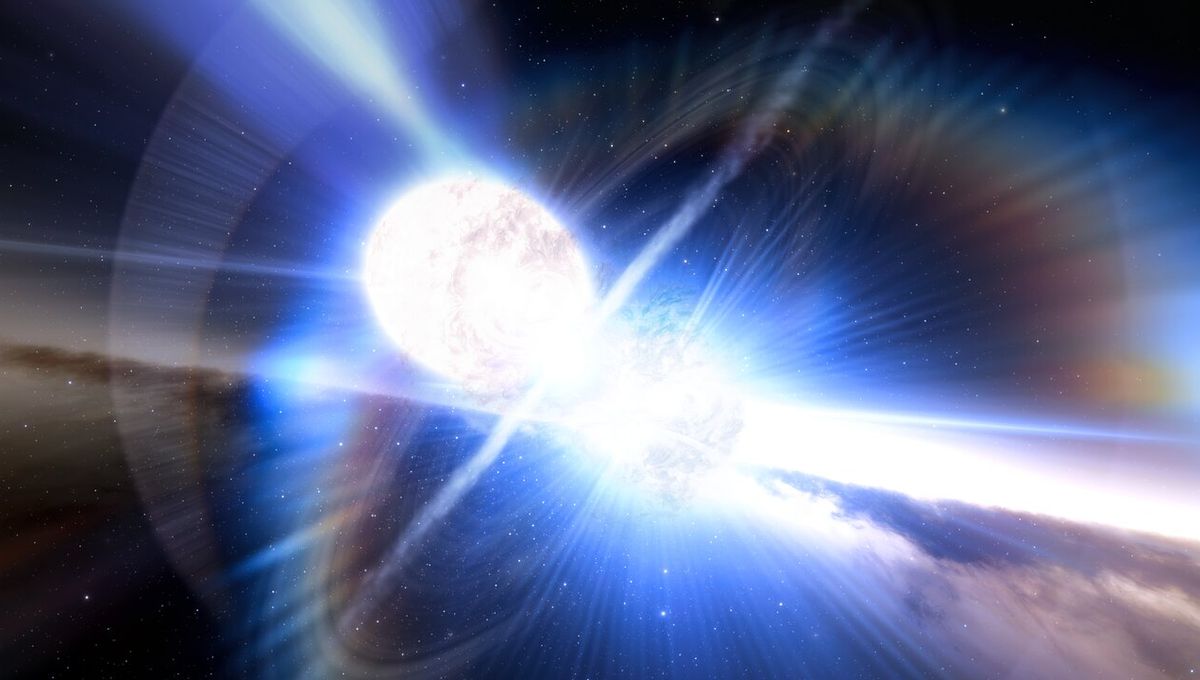
Whenever you think you know something, Mother Nature is ready to throw you a curve ball. Take, for example, gamma-ray bursts – brief flashes of the most powerful light in the universe. The short-duration ones are created in the kilonova produced by the merging of compact objects such as neutron stars. The long-duration ones are instead created by supernovae. So, imagine the surprise of astronomers discovering a kilonova creating a long-duration gamma-ray burst.
This “oddball” event is known as GRB 211211A and it originates from 1.3 billion light-years away. Different teams observed the same events with two telescopes, the Fermi Gamma-ray Space Telescope and the Neil Gehrels Swift Observatory, and all came to the same conclusion that the over-50-second-long event was created by a kilonova.
“We surprisingly saw a kilonova. I say surprisingly because we saw hundreds if not thousands of long gamma-ray bursts, and every time we saw one there was a supernova following them,” lead author Dr Eleonora Troja from the Università di Roma Tor Vergata, told IFLScience. “This is a well-established knowledge. We thought we had figured out the explanation for long-duration gamma-ray bursts.”
“This time we didn’t find any supernovae. And we looked with the most powerful telescopes in the world, including the Hubble Space Telescope; but did not find any sign of a supernova. Instead, we found a kilonova,” Dr Troja explained.
So instead of the death of a star at least 10 times the mass of the Sun, the researchers found evidence of a neutron star merging with either another neutron star or with a stellar-sized black hole. The catastrophic collision shreds the neutron star apart, releasing an incredible amount of energy as a kilonova. Something that had not been seen before for certain.
There has been a previous detection of a supernova-less long-duration gamma-ray burst, but astronomers did not find a kilonova behind that one. This latest detection, and the relative vicinity of the event, has allowed us a more detailed understanding of the process. However, the researchers remain unsure exactly how kilonovae can produce a long-duration gamma-ray burst.
“We are still recovering from the shock,” Dr Troja said laughingly to IFLScience. “What we know is that in most cases, neutron star collisions can produce a gamma-ray burst of short duration, less than two seconds long. This event taught us that in some cases they can create gamma-ray bursts of long duration.”
Kilonovae are also the site of formation for some of the heaviest elements in the universe, such as gold and platinum, so this discovery means that long gamma-ray bursts can be used to study those environments in the case of kilonovae.
The analysis of this discovery was published in four papers in Nature, here, here, here, and here, and one in Nature Astronomy.
Source Link: "Oddball" Minute-Long Gamma-Ray Burst Came From A Totally Unexpected Source